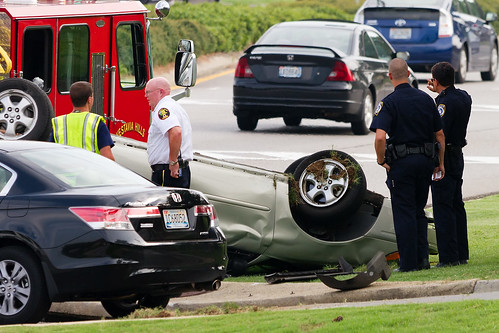A Southampton-based company has been heavily fined by the Southampton Magistrates’ Court after a worker was seriously injured in the course of their employment.
Mr Joshua Senior, 25, was working for his employer, Pfiefer Rope & Tackle Ltd, at the Rock (UK) adventure centre in Kent on 25 August 2010 when the accident occurred. Mr Senior was preparing to undertake a practice parachute landing course and had ascended to the top of the tower in order to do so. However, the rope that Mr Senior had been supplied with was defective and as he made his descent it unravelled, causing him to drop almost thirty feet (nine metres) to the ground below. This resulted in his sustaining serious injuries to his back, including a broken back, and being paralysed from the waist down for almost six months. He slowly regained the use of his limbs in hospital over the six-month period and after a period of time had to have his right ankle amputated as the injury was so bad.
The Health and Safety Executive was notified of the accident and investigated the circumstances of the fall. This investigation resulted in a recommendation that the company be prosecuted for a potential breach of health and safety laws, namely s.3(1) of the Health and Safety at Work etc Act 1974 – that the company had failed to take reasonably practicable steps to ensure the health, safety and welfare of its employees at work.
The case came before the Southampton Magistrates’ Court earlier this month and the company pleaded guilty to a breach of the above Act. The court therefore fined the company £20,000 and ordered it to pay the prosecution’s costs, which amounted to £6,348.
It is not currently known whether Mr Senior has claimed or will claim personal injury against the company. It is also not known whether the injured employee was able to return to work with the company or at all and, if so, in what capacity.
Marc Hadrill, a personal injury solicitor at law firm Redmans, commented: “Businesses in the United Kingdom have an obligation to comply with UK health and safety legislation, including a duty to ensure that all reasonably practicable measures are taken to minimize the risk to employees and third parties’ health, safety and welfare in the workplace.”
HSE Specialist Inspector Steve Simmons-Jacobs said after the judgment: “Rope and sling manufacturers have a duty to their customers and others to ensure that the product is suitable for the designed loads and that their quality control systems are robust and effective at all times. Companies must realise that their systems may be critical to the health and safety of the people who use their products.”
Direct 2 Lawyers can put you in touch with employment solicitors who offer employment law advice to employees and employers

